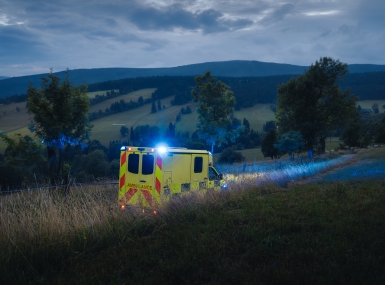Uninsured Rates Lower in Majority of Counties
Upcoming Events
Related News

Uninsured rates declined in most counties between 2014 and 2015; nearly all large counties saw drops
In late March, the U.S Census Bureau released the 2015 Small Area Health Insurance Estimates that provide information on changes in health insurance coverage across counties.
The data shows that uninsured rates declined in most counties between 2014 and 2015. Overall, 71 percent of the 3,069 counties with county governments saw declines in the uninsured rate for those under 65. Most populous counties were more likely to record drops in uninsured rates. Virtually all (98 percent) large counties (those with more than 500,000 residents) saw declines.
The uninsured rate went down in 84 percent of medium-sized counties (with between 50,000 and 500,000 residents). Only about two-thirds of small counties (under 50,000 residents) fit this pattern.
Regional differences persist across the country. Counties in the Northeast saw the most widespread drops in uninsured rates (93 percent), bringing the rates in this region to the lowest in the country.
In contrast, counties in the South tend to have higher rates of uninsured, usually a third more than the 9.1 percent national rate. Only two-thirds of them saw declines in the rate of uninsured between 2014 and 2015. Counties in the West and Midwest are somewhere in between, with 73 percent of counties in both regions showing declines.
Southern and Western counties recorded the biggest drops in uninsured rates between 2014-2015. Most often, the uninsured rate dropped by almost 3 percentage points among counties. Almost all counties with drops greater than 5 percentage points are in the South or the West. California and New Mexico counties led in the West, as 35 percent of the top 100 most improved counties were found in these two states. For example, McKinley County, N.M. had one of the highest drops in uninsured rate between 2014 and 2015, more than 7 percentage points in one year.
An interesting demographic to look at are those who are near retirement age. This age group (between 50-64 years of age) is more likely to have health insurance: about 94 percent of them had health insurance in 2015. Because of this, significantly fewer counties saw their uninsured rate declining in this age bracket – only 32 percent overall. For example, Imperial County, Calif. logged a 7 percentage point change in the uninsured rate between 2014 and 2015.
Counties form the support network that provide care to underserved populations. The new Census data shed light on evolving trends in health insurance coverage status across counties and highlight geographical and age demographic disparities.
Attachments
Related News

House passes three-year extension of ACA Enhanced Premium Tax Credits
On January 8, the U.S. House of Representatives passed legislation to extend enhanced Affordable Care Act (ACA) premium tax credits (EPTCs) for three years, sending the measure to the Senate as lawmakers work to negotiate a bipartisan compromise.

CMS requires state Medicaid suspension upon arrest versus termination
Effective January 1, 2026, federal law now requires states to suspend, rather than terminate, Medicaid coverage when an individual is incarcerated.

CMS announces Rural Health Transformation Program funding
On December 29, the Centers for Medicare & Medicaid Services (CMS) announced $50 billion in awards over 5 years to all 50 states under the Rural Health Transformation Program.